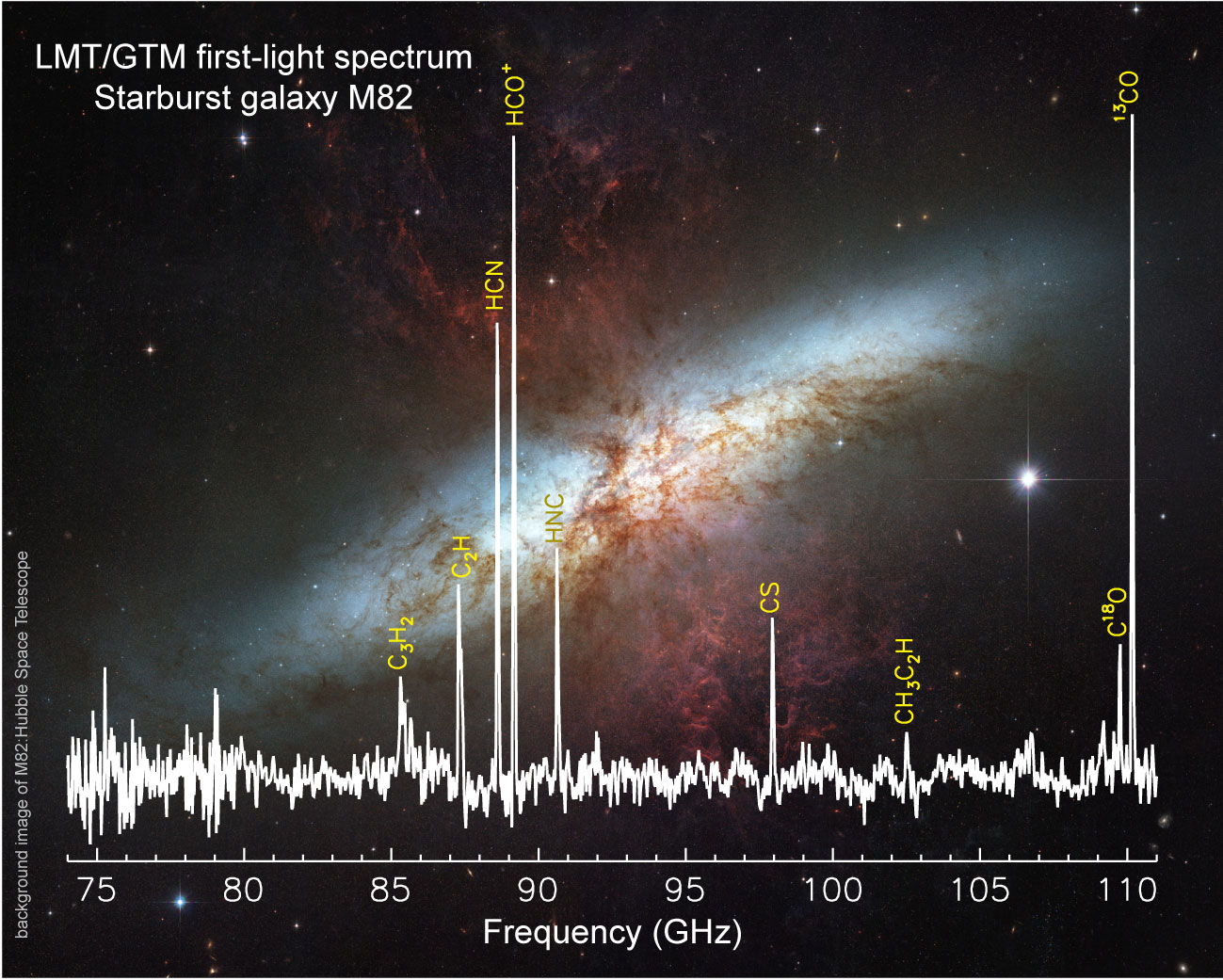LMT/GTM Achieves First Light
Press Release
Redshift Search Receiver Results on Nearby and High Redshift Galaxies
First Light Image by AzTEC at 1.1mm
Spectrum of the millimeter-wave emission from the starburst galaxy Messier
82 superimposed on an image of the galaxy obtained by the Hubble Space
Telescope. The spectrum shows the strength of the emission from the galaxy
at different wavelengths or frequencies of light. At some frequencies there
is a strong signal due to the emission from a specific molecular species.
These strong emissions, which appear as spikes in the spectrum, allow
astronomers to probe the physical conditions and chemical makeup of the gas
where stars are forming in the galaxy. The relative strength of each
molecular signature seen, such as isotopic variants of carbon monoxide (CO)
and simple molecules such as hydrogen cyanide (HCN), hydrogen
isocyanide (HNC), carbon monosulfide (CS) and the abundant interstellar
molecular ion HCO+, provides key information about the conditions in star
forming regions in these very distant galaxies.
FCRAO is supported by NSF grant AST 08-38222


